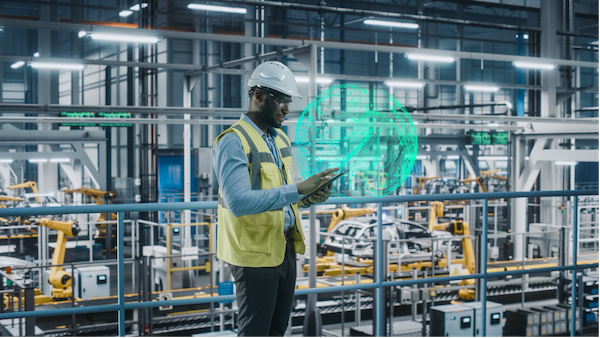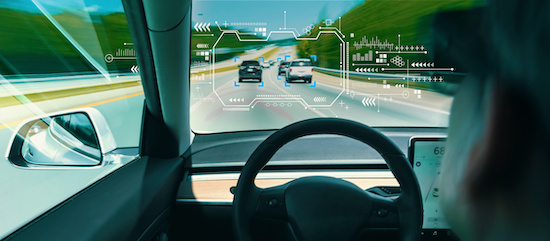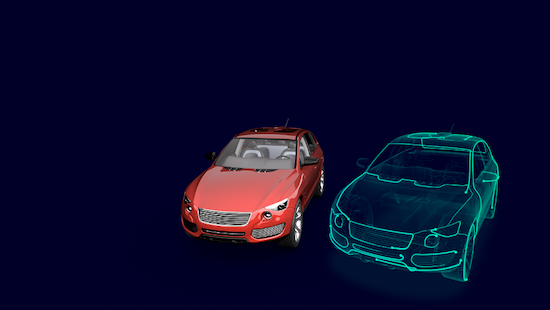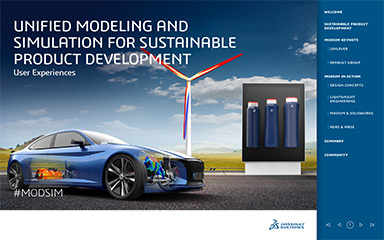Digitalization Key to Addressing the Complexities of Autonomous Vehicle Development
Autonomous vehicles (AVs) are altering the vehicle development and production chain.

Latest News
August 18, 2022
The automotive market is undergoing a transformation. New technologies, consumer demands, environmental pressures and more are driving a race to reinvent the personal driving experience by making it more comfortable, convenient, safe, and sustainable. Autonomous vehicles (AVs) are a key piece of this transformation and are impacting the vehicle development and production chain as they come closer to being reality.
AVs will require a constellation of advanced technologies and engineering domains to achieve true self-driving capabilities. This includes mechanical, electrical, and electronic systems as well as embedded software, artificial intelligence and machine learning, and communications networks all working together to deliver self-driving functionality. In an AV, these domains intersect to a greater degree than they have previously, ensuring that no system within the vehicle is truly independent.
A lane-keep assist system, for example, requires sensors, processors, and software to perceive road lines and calculate vehicle trajectory before activating mechatronic components in the steering system to exert control over the vehicle. Yet, even the most advanced systems available today only achieve level 3 self-driving capabilities (Figure 1). While a level 3 system may require the human driver to take control under certain circumstances, a level 4 system must always exert total control over the vehicle, though only within its specified operational conditions.

Figure 1: Contemporary features, such as lane keep assist or adaptive cruise control, rely on a combination of sensors, processors, and electromechanical actuators.
Nonetheless, further progress on the road to full autonomy will depend on the maturation of several key technologies: vision sensors must be able to accurately identify other vehicles, pedestrians, and myriad other objects in a variety of weather and lighting conditions. Onboard computing power will need to increase significantly to process the immense amount of incoming sensor data at near real-time speeds. Besides, vehicle-to-vehicle, vehicle-to-infrastructure, and vehicle-to-cloud communications will need to become more widespread to enable AVs to operate as a system, rather than individual vehicles.
The inherent challenge is that as these technologies mature and move the industry closer to level 4 and 5 AVs, the complexity of the vehicle grows. A level 5 AV replaces all the “sense-think-act” functions a human driver may need to perform with software, electronics, and mechanical or mechatronic components. Cameras and other types of sensors act as the eyes, ears, and nerve endings for the vehicle, perceiving the driving environment and providing information to the other systems within the vehicle. Computer chips and advanced software combine to act as the “brain”, taking in sensory information for processing and decision making. High speed network connections can be thought of as “nerves” that carry information from the sensor systems to the processing core and transmit instructions in the opposite direction. And finally, the mechanical and mechatronic systems that act as the “muscles” as they convert electrical signals into physical motion to provide steering, braking, acceleration, and more.
The result is a vehicle that is more and more of a “computer on wheels”.
That’s why companies that hope to participate in the self-driving vehicle revolution - including legacy automotive original equipment manufacturers, suppliers, and new market entrants - must be able to deliver innovative features and contend with the mounting complexity of integrating these features into the mechanical, electrical, and electronic systems of a vehicle. It is critical for automakers to digitalize the entire vehicle design, development, validation, manufacturing, and utilization lifecycle (figure 2).

Figure 2: A comprehensive digital twin of the vehicle will enhance innovation and help companies confront challenges in the future more effectively.
At the heart of this transformation is the concept of a comprehensive digital twin of the vehicle, covering every aspect of the vehicle and its associated production processes, over its entire lifecycle. Such a digital twin becomes the backbone of product development − capable of delivering greater insight, reducing development cycle time, improving efficiency, and increasing market agility.
It will act as the foundation for the collaborative, integrated approach demanded by modern vehicles, bringing the mechanical, electrical, electronic, and software domains together to design a complete system. High-fidelity simulations of the comprehensive vehicle digital twin enable engineering teams to use the knowledge from known real-world situations in combination with proven mathematical methods to uncover safety-critical scenarios. Doing so in a virtual environment allows teams to uncover and analyze these scenarios much more efficiently, reducing the number of unknown safety-critical systems. These simulation solutions can therefore support full vehicle verification and validation in various environmental and traffic conditions. These solutions allow companies to test various systems and even entire vehicles in virtual environments before committing to the expense of prototyping and physical certification.
When it comes to implementing these advanced technologies and vehicle development methods, it’s important to recognize the value of strong technology partnerships to the success of the digital transformation program. Companies like Siemens have been working with customers from all industries to develop digitalization plans and to build powerful digital twins of products, production processes, and more. A technology partner can offer a robust portfolio of digital capabilities, consulting and engineering services that can reduce risk in digital transformation programs and accelerate progress to key milestones. A strong technology partner will also deploy technologies in the manner that best fits the company’s needs: on-premises, in the cloud, or through a hybrid cloud approach. With the right support in engineering technology and services, automotive companies can overcome the challenges of AV complexity and the digital future of their industry.
About the Author:
Nand Kochhar is the vice president of Automotive and Transportation Industry Strategy for Siemens Digital Industries Software. He joined Siemens in 2020 after nearly 30 years with Ford Motor Company, where he most recently served as Global Safety Systems Chief Engineer. In this capacity, Kochhar was responsible for vehicle safety performance of all Ford and Lincoln brand products globally. He also served as Executive Technical Leader, CAE, and as a member of Ford’s Technology Advisory Board. Kochhar’s tenure at Ford also included executive engineering leadership across a range of disciplines including in product development, manufacturing, digitalization, simulation technology development and implementation.

Subscribe to our FREE magazine, FREE email newsletters or both!
Latest News






